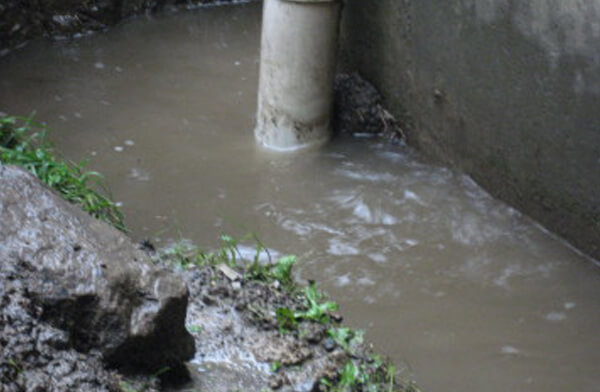Overview To Water Leakage Detection In Your Home
Overview To Water Leakage Detection In Your Home
Blog Article
Almost everyone is bound to have their unique assumption about Detecting hidden plumbing leaks.

Early detection of dripping water lines can mitigate a possible disaster. Some small water leaks might not be visible.
1. Check Out the Water Meter
Every residence has a water meter. Checking it is a surefire manner in which helps you uncover leakages. For beginners, turn off all the water resources. Ensure no one will purge, make use of the tap, shower, run the cleaning equipment or dish washer. From there, go to the meter and watch if it will certainly change. Given that no one is using it, there need to be no motions. If it relocates, that indicates a fast-moving leak. If you detect no modifications, wait a hr or 2 and check back once again. This indicates you may have a sluggish leakage that might also be below ground.
2. Inspect Water Intake
If you detect abrupt modifications, in spite of your consumption being the same, it means that you have leakages in your plumbing system. An unexpected spike in your bill indicates a fast-moving leakage.
A consistent increase every month, also with the exact same practices, shows you have a slow-moving leak that's also gradually intensifying. Call a plumber to thoroughly examine your building, particularly if you really feel a warm area on your flooring with piping underneath.
3. Do a Food Coloring Examination
When it pertains to water consumption, 30% originates from toilets. Examination to see if they are running appropriately. Drop flecks of food shade in the tank and also wait 10 minutes. There's a leak in between the container as well as dish if the color in some way infiltrates your bowl throughout that time without flushing.
4. Asses Outside Lines
Don't fail to remember to check your outside water lines also. Test spigots by affixing a garden hose pipe. Needs to water seep out of the link, you have a loosened rubber gasket. Change this and make sure all links are tight. If you've obtained a sprinkler system, it will certainly aid get it professionally took a look at and also maintained yearly. One small leakage can throw away lots of water and spike your water bill.
5. Evaluate and also Analyze the Situation
Property owners ought to make it a routine to examine under the sink counters and also also inside cabinets for any type of bad odor or mold and mildew growth. These two warnings show a leak so prompt focus is required. Doing regular examinations, also bi-annually, can save you from a major issue.
Examine for stainings as well as compromising as a lot of home appliances as well as pipes have a life expectations. If you presume leaking water lines in your plumbing system, don't wait for it to escalate.
Early detection of leaking water lines can reduce a prospective disaster. Some small water leaks might not be visible. Checking it is a proven means that aids you find leakages. One tiny leak can throw away lots of water and also surge your water expense.
If you think dripping water lines in your plumbing system, don't wait for it to intensify.
How to Know If Your Home Has a Hidden Leak
Water Meter Reveals Inexplicable Water Usage
If you’d like to test whether or not there’s a leak somewhere in your home, you can do this using your water meter. Here is how to conduct the test:
Don’t use any water in your home for at least 30 minutes; this also means not turning on faucets or water-using appliances.
Go outside, and check your water meter for activity.
If your water meter shows that there was activity, even though no one was using any water, this proves that there is a leak in your home.Visible Mold or Mildew Growth
Leaks behind walls create moist, dark environments that allow mold and mildew to grow and thrive. Eventually, you might see mold growth forming on the wall closest to a hidden leak.
If mold is growing in an area that receives a high amount of moisture, such as a bathroom, it may simply be an indication that better ventilation is needed. However, if you see mold growth on a wall or the ceiling in an area where you would not expect, you probably have a hidden leak.
Musty, Mildew Odor
Sometimes you might not be able to see the mold or mildew that is growing as a result of a leak. However, the smell can give the problem away just as easily. If you catch a whiff of something musty, there’s a good chance that old water is collecting somewhere in your home that you can’t see.
Stained/Warped Walls, Ceilings, or Floors
When your home soaks up water, a variety of red flags can become visible, including ceiling stains, bubbling drywall, warped walls, and sagging floors. While these issues can be caused by excess humidity, they can also be signs that a pipe or plumbing connection has started leaking behind your walls.
Inexplicably High Water Bill
After a while, you get a general sense for what your water bill should be. If you own a pool or sprinkler system, your bill will tend to be higher during summer. However, if you receive a water bill that seems especially high, and you can’t figure out what caused it, then you may have a hidden leak somewhere that’s increasing your bill.
https://www.plumbingjoint.com/blog/2019/july/how-to-know-if-your-home-has-a-hidden-leak/

I recently found that article about Detecting hidden plumbing leaks while scouting around the web. Loved our post? Please share it. Help others find it. Thanks for your time. Visit us again soon.
Report this page